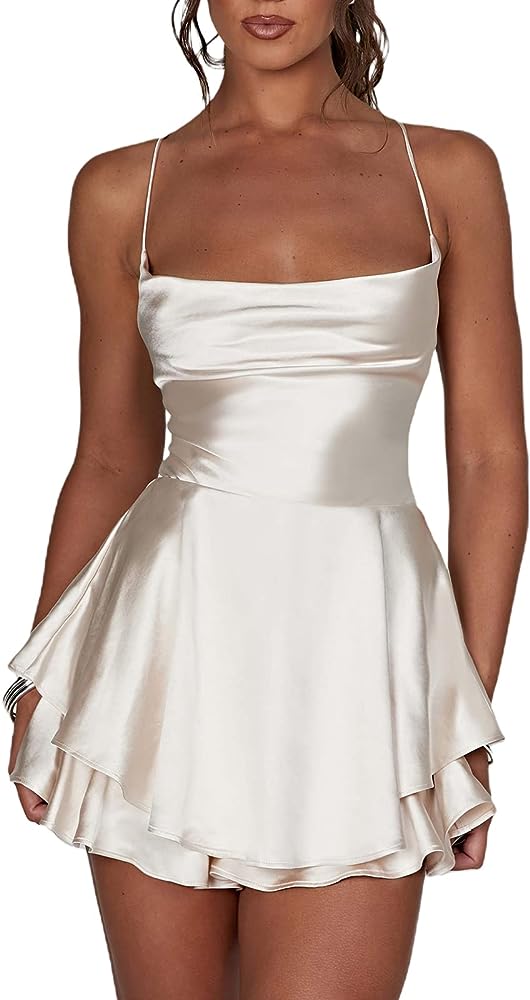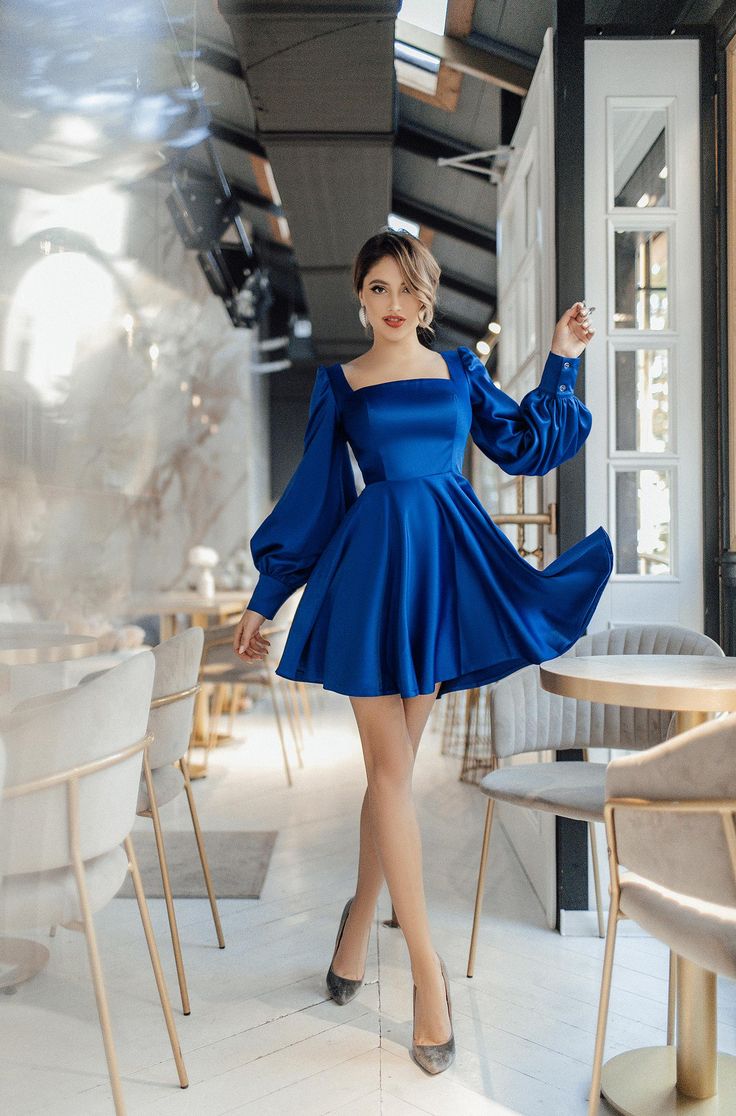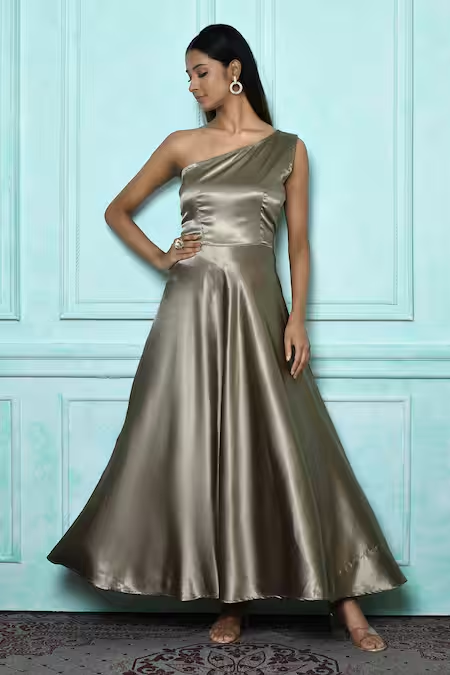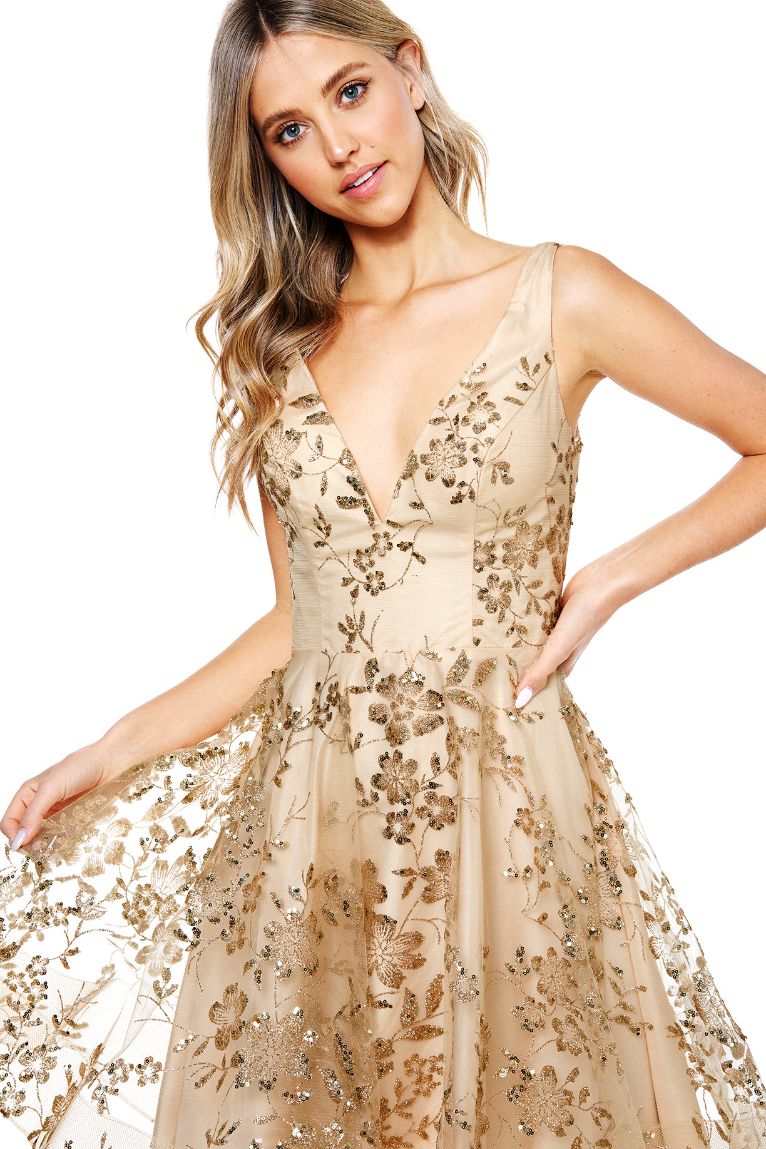Introduction to Satin Glamour
Satin dress have long been celebrated for their luxurious texture and the sophisticated sheen that graces every silhouette with unmatched elegance. The unique weave of satin fabric, characterized by its glossy surface and dull back, imbues dresses with a fluidity and drape that accentuates the body’s contours while providing an air of classical sophistication. Originating from the Middle Ages, satin was initially a weave derived from silk, making it a coveted material reserved for the upper echelons of society. Today, however, satin is made from a variety of fibers, including silk, polyester, and acetate, making it accessible to a broader audience while retaining its luxurious appeal. The evolution of the satin dress through history, from royal courts to modern-day fashion runways, reflects its timeless appeal and the continued fascination it holds for designers and fashion enthusiasts alike.
The adaptability of satin as a fabric allows it to be fashioned into a myriad of dress styles, from grand ball gowns to sleek cocktail dresses, making it an ideal choice for virtually any occasion. Its inherent sheen catches the light, creating a dynamic interplay of shadows and highlights that adds depth and allure to the garment. A satin dress, through its various incarnations, has the unique ability to convey elegance and sensuality, making it a staple in the wardrobe of those who appreciate refined style.

The Versatility of Satin Dresses
Satin dresses transcend simple categorization, thanks to their incredible versatility. This fluid fabric can be sculpted into an array of designs, from minimalist slip dresses that evoke a 90s chic to opulent wedding gowns that shimmer with every step. The key to satin’s versatility lies in its texture and sheen, which can complement both understated and elaborate designs. For daytime events, a satin midi dress in a muted color can convey a sense of restrained elegance, especially when paired with minimal accessories and a structured blazer. In contrast, for evening affairs, a satin gown with intricate draping or embellishments becomes a dazzling statement piece.
Designers often exploit the malleability of satin to create sculptural silhouettes that challenge the conventional boundaries of evening wear. Asymmetrical necklines, daring cut-outs, and dramatic slits are just some of the design elements that can be enhanced by satin’s lustrous sheen. The fabric’s ability to reflect light adds dimension and a sensual quality to these designs, making each movement a mesmerizing display of color and form. Moreover, the variety of weights and thicknesses available in satin fabrics means that there is a perfect type of satin for every season, further attesting to its versatility.

The Art of Styling Satin Dresses
Styling a dress for women requires a thoughtful approach to accentuate its splendor without overshadowing the wearer. For formal events, satin dresses can be paired with understated jewelry to let the fabric’s natural sheen be the focal point. A pair of diamond studs or a delicate pendant can add a touch of sparkle without competing with the dress’s glossy finish. Footwear choices should similarly complement the dress’s elegance; sleek heels or refined flats in satin or velvet can create a cohesive look.
Layering plays a crucial role in adapting satin dresses for various occasions and temperatures. A tailored blazer or a fur stole draped over the shoulders can introduce texture contrast while providing warmth during cooler months. For a more casual look, pairing a satin slip dress with a leather jacket and ankle boots can strike a perfect balance between edginess and sophistication. The key is to maintain harmony in the outfit, allowing the satin dress to shine while the accessories and layers enhance its beauty without overwhelming it.
The Allure of Colored Satin Dresses
While black and white satin dresses evoke timeless elegance, colored satin dresses offer a vibrant alternative that can capture the mood of an occasion or season. Pastel-hued satin dresses, in shades of blush, lavender, or soft blue, can convey a sense of springtime freshness, ideal for daytime weddings or garden parties. Bold colors, such as emerald green or sapphire blue, can imbue a satin dress with regal opulence, suitable for gala events or formal evenings.
The choice of color in a satin dress can also significantly impact the wearer’s overall presentation. Bright tones can energize the look, making a confident statement, while darker shades lend a mysterious allure. Moreover, colored satin dresses provide an excellent backdrop for accessories, enabling the wearer to experiment with contrasting or complementary colors for a personalized style. The fluidity of satin in rich colors creates a captivating visual effect, ensuring that the wearer stands out in any setting.

Caring for Satin Dresses
Maintaining the beauty of a sequin dress requires specific care to preserve its texture and sheen. Satin, particularly when made from natural fibers like silk, is prone to wrinkles and can be easily damaged by improper handling. When storing a satin dress, it’s advisable to hang it in a garment bag away from direct sunlight
to prevent color fading and fabric degradation. Avoid folding the dress as this can lead to stubborn creases that are difficult to remove. If wrinkles do form, steaming is preferred over ironing, as direct heat can scorch satin fibers, causing irreversible damage. Always use a steamer at a safe distance and with a protective cloth to avoid water spots.
When it comes to cleaning, satin dresses often require special attention. Always check the care label before attempting any form of cleaning. Many satin dresses, especially those made from silk, may need professional dry cleaning to avoid water marks and shrinkage. For minor spills on synthetic satin, dabbing gently with a damp cloth can remove stains without the need for harsh chemicals, which can deteriorate the fabric’s luxurious sheen. It’s crucial to avoid rubbing the fabric harshly as this can cause the weave to shift, creating a permanently distorted area on the dress.

Sustainable and Ethical Considerations
In an era where sustainability and ethical considerations are increasingly coming to the forefront of fashion discourse, satin dresses are not exempt from scrutiny. The production of satin, particularly silk satin, has environmental and ethical implications, given the resources required for silk cultivation and the process involved in turning these fibers into fabric. As consumers become more conscientious, seeking sustainable and ethically produced fashion options has become a priority for many.
Fortunately, advancements in fabric technology have led to the development of eco-friendly satin alternatives made from recycled polyester and plant-based fibers. These sustainable options offer the same luxurious feel and appearance as traditional satin while ensuring a smaller environmental footprint. When purchasing a satin dress, opting for materials from ethical brands that prioritize sustainability can make a significant difference. Additionally, caring for and prolonging the life of satin garments through proper maintenance and repairs rather than discarding them contributes to a more sustainable fashion cycle.

Conclusion: The Satin Dress as a Wardrobe Staple
The satin dress, with its alluring sheen and fluid drape, remains a cherished item in the world of fashion, transcending trends to become a timeless wardrobe staple. Its versatility across different styles, occasions, and seasons ensures that there is a satin dress to suit every preference and body type. Whether adorned in minimalist elegance or opulent glamour, the wearer of a satin dress is enveloped in an aura of sophistication and allure.
Beyond its aesthetic appeal, the satin dress embodies the fusion of art and science in fabric technology, offering opportunities for sustainable and ethical fashion practices. As the fashion industry evolves, the satin dress stands as a testament to enduring style, adaptability, and the potential for positive change. Whether stepping out in a vibrant colored satin gown or a sleek, understated slip dress, the choice of a satin dress is a declaration of refined taste and an appreciation for the enduring beauty of fabric craftsmanship.



